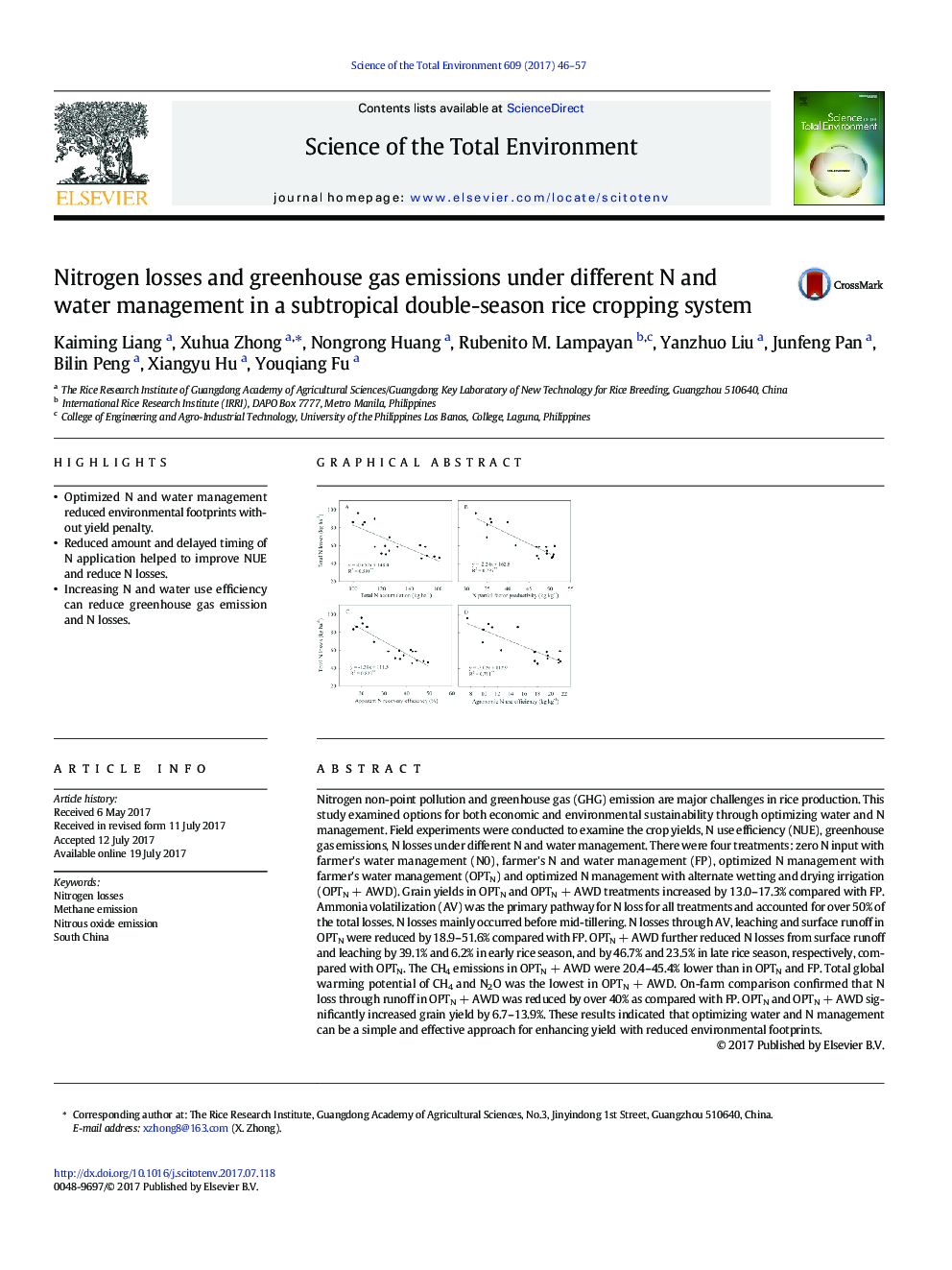| Article ID | Journal | Published Year | Pages | File Type |
|---|---|---|---|---|
| 5750729 | Science of The Total Environment | 2017 | 12 Pages |
â¢Optimized N and water management reduced environmental footprints without yield penalty.â¢Reduced amount and delayed timing of N application helped to improve NUE and reduce N losses.â¢Increasing N and water use efficiency can reduce greenhouse gas emission and N losses.
Nitrogen non-point pollution and greenhouse gas (GHG) emission are major challenges in rice production. This study examined options for both economic and environmental sustainability through optimizing water and N management. Field experiments were conducted to examine the crop yields, N use efficiency (NUE), greenhouse gas emissions, N losses under different N and water management. There were four treatments: zero N input with farmer's water management (N0), farmer's N and water management (FP), optimized N management with farmer's water management (OPTN) and optimized N management with alternate wetting and drying irrigation (OPTNÂ +Â AWD). Grain yields in OPTN and OPTNÂ +Â AWD treatments increased by 13.0-17.3% compared with FP. Ammonia volatilization (AV) was the primary pathway for N loss for all treatments and accounted for over 50% of the total losses. N losses mainly occurred before mid-tillering. N losses through AV, leaching and surface runoff in OPTN were reduced by 18.9-51.6% compared with FP. OPTNÂ +Â AWD further reduced N losses from surface runoff and leaching by 39.1% and 6.2% in early rice season, and by 46.7% and 23.5% in late rice season, respectively, compared with OPTN. The CH4 emissions in OPTNÂ +Â AWD were 20.4-45.4% lower than in OPTN and FP. Total global warming potential of CH4 and N2O was the lowest in OPTNÂ +Â AWD. On-farm comparison confirmed that N loss through runoff in OPTNÂ +Â AWD was reduced by over 40% as compared with FP. OPTN and OPTNÂ +Â AWD significantly increased grain yield by 6.7-13.9%. These results indicated that optimizing water and N management can be a simple and effective approach for enhancing yield with reduced environmental footprints.
Graphical abstractDownload high-res image (115KB)Download full-size image
